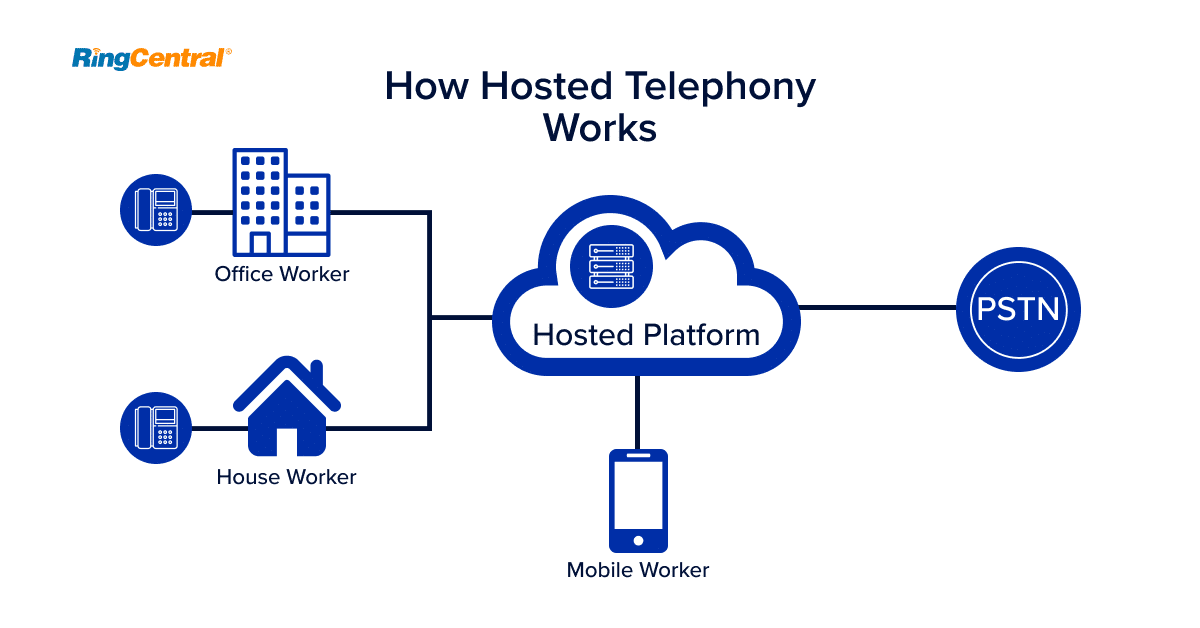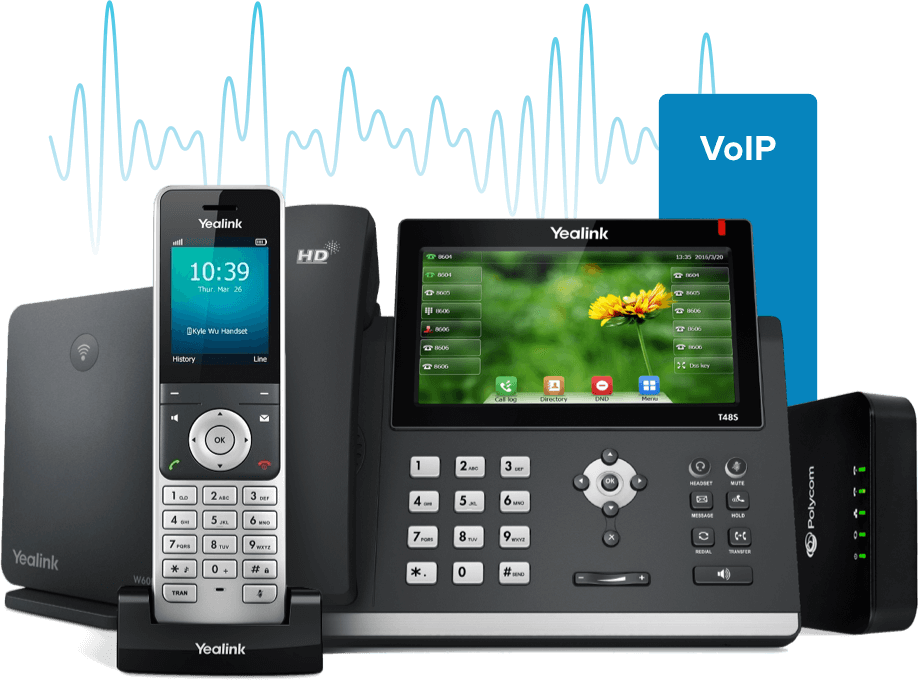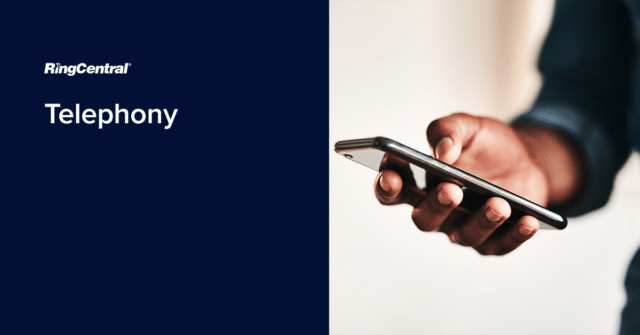What is telephony?
Telephony is the technology we use to allow communication from afar. Commonly associated with voice communication between two or more physically disparate parties, telephony has come a long way since the invention of the first telephone.
The term telephony is used to describe the technology used to send text messages, video calling and conferencing, voicemail, call recording and fax.
This post will explore what telephony is, how different types of telephony work, and, most importantly, how it has evolved over time.
A brief history of the telephone
Did you know the word telephone originates from the Greek ‘tele’ meaning far, and ‘phone’ meaning to speak? In essence, that’s precisely what a telephony system is – technology that allows us to connect using audio signals from afar.
Patented by Alexander Graham Bell’s inventor in 1876, the telephone allowed people to transmit human speech electronically for the first time. Building upon the telegraph system’s mechanics (an electrical text messaging system which had been used since the 1840s) Bell became the inventor of the telephone, reportedly beating the American electrical engineer, Elisha Gray to the title by a matter of hours.
The first-ever telephone conversation took place between Bell and his assistant Thomas Watson when Mr Watson was in the next room. The first call to span a great distance (from Salem to Boston) took place not long after. Bell then founded the Bell Telephone Company in July 1877.
Soon after this, the invention of the telephone exchange enabled more widespread uptake of the technology, allowing people to connect via a switchboard operator, to communicate with other local parties wired for the service. Trunk lines were introduced to connect individual telephones and allow more long-distance phone calls to take place.
In 1915, Bell and Watson christened the transcontinental telephone service with an iconic phone call. Bell repeated the now-famous utterance as delivered in that first call: ‘Mr Watson, come here. I want to see you’, to which Watson replied that this would now take around five days. President Woodrow Wilson reportedly also joined them on that ceremonious call.
Since the days of these early phone calls telephony has come a long way. In the 60s, more advanced features came into play, such as call waiting. In the early 70s, computer scientist Danny Cohen pioneered NVP (Network Voice Protocol), the predecessor of VoIP (Voice over Internet Protocol).
In the mid-nineties, the first Internet Phone was released, marking the commercial inauguration of VoIP services, then in 2003, Skype launched the pioneering, free VoIP services we know today.
Telephony in the modern world
Historically, the term ‘telephony’ has been used to describe traditional landline telephones and the hardware of a physical telephone device. The advent of cloud computing has blurred the lines between the old copper telephone lines and PBX systems of days gone by and the more general, ever-evolving field of telecommunications.
In modern terms, the word is now universally used to describe communications technology in general. Solutions that enable two or more parties to make contact via voice, video, messaging and fax would now come under the ‘telephony’ umbrella. These indispensable technologies have evolved with today’s consumer and the modern workplace’s ever-changing needs to encompass all verbal communication, whether that be the transmission of text, electronic voice signals, or video communications.

How does Hosted Telephony work?

The rise of cloud computing has changed the game when it comes to communications technology. While different types of telephony work under the same umbrella and have the same purpose of enabling two-way communications, the different technology in play means that they function differently.
Where telephony formerly conjured associations with the traditional POTS (plain old telephone service) or PSTN (public switched telephone network) systems, now the field is governed by more modern VoIP (voice over IP) technology, also known as IP telephony or Internet Telephony.
-
Traditional telephony
Traditional telephony enabled real-time conversations using the wires and cables of the PSTN. Transforming voice sound waves into electronic signalling, the old systems would transport snippets of dialogue from one recipient to the other, converting the electronic signals back to sound signals upon arrival at the destination.
Traditionally, these regional, national and international cables would have been copper lines, but these have increasingly been replaced by more fibre-optic cabling to support faster, more robust connectivity.
-
Mobile telephony
Essentially, when it comes to telephony, a mobile phone acts as a two-way radio to transmit and receive radio waves to a local cell tower. A mobile conversation takes place by your phone converting sound waves into electronic signals and transmitting them via radio waves to the closest available cellular network tower.
The cellular network then uses radio signalling to carry these snippets of dialogue to the recipient’s mobile device, which transfers these electronic signals back into sound.
-
Internet telephony
Put simply, Internet telephony (also read VoIP or IP Telephony) works by making phone calls via the internet. Rather than analogue signals via a traditional landline, internet telephony converts voice into digital signals to transmit them from one recipient to another.
VoIP systems, a subcategory of internet telephony, deliver both voice and other types of communication via broadband, private IP networks and a VoIP router.
-
Faxing
The purpose of a fax machine is to send and receive documents. Traditional fax technology works in the same way as a legacy telephone system. Rather than using sound waves, the fax machine sensors work by encoding a printed document. It then converts the graphic into electronic signals with travel across the network to the recipient’s machine. The fax machine receiving the document then receives the signals as electrical pulses which control a printer to print a replica of the original document.
In virtual faxing (also known as IP faxing or FoIP), software encodes the scanned document, converting it into data that then travels over the internet to reach the recipient IP address.
Types of telephony systems for enterprises
-
On-Premises PBX
Traditional, on-premises PBX systems used to be the norm. The PBX is a device physically located on-site and controls inbound and outbound calls. While this telephony solution method is somewhat outdated, it offered a robust and reliable system with essential features for businesses.
A traditional PBX offers call queuing, hold music and call transfers, with each user able to make and receive calls using their own personal extension.
With the BT switch off (whereby analogue phone lines will no longer be used) set to take place in 2025, legacy systems such as the traditional PBX are becoming less common. As digital technologies continue to develop, these legacy systems are displaced with more efficient, and often more cost-effective telephony solutions.
As many businesses look to future-proof their communications technology, many opt to upgrade to the increasingly popular VoIP PBX.
-
VoIP PBX or IP PBX
A VoIP (voice over IP) phone system is also known as an IP PBX. Both terms describe a business phone system that uses internet protocol to transfer voice data from one IP address to another. Similarly, as a traditional PBX, the term refers to the switchboard aspect of a private phone system.
Delivering much of the same features and functionality as a traditional PBX, the VoIP equivalent works much in the same way. Instead of using the Public Switched Telephone Network (PSTN), a VoIP system uses the businesses LAN or WAN data network to transmit and receive calls. An IP solution can also switch calls between VoIP and traditional telephone users. A VoIP system can come in the form of a comprehensive software system, or it might also be hardware-based depending on the organisation’s requirements.
These VoIP systems consist of an IP PBX server, VoIP phones and occasionally a VoIP gateway. Users or SIP clients use either a softphone or hardware-based phone handset to register with the PBX server, establishing the connection when they choose to make a call.
-
Hosted VoIP Phone System
VoIP telephony essentially works by converting voice calls into a series of data packets and transmitting them via the network. A hosted VoIP system work in a similar way to a traditional or IP PBX, but rather than maintaining several servers, the hosted option provides businesses with a complete cloud phone service delivered by a VoIP provider.
The use of hosted data centres means organisations need less on-site hardware than with other phone systems and maintenance is fully taken care of as part of the agreement with the respective provider, meaning less strain on your IT team.
A hosted phone system means phones can connect via VoIP servers that are hosted in the cloud. This also often offers more calling capabilities than other PBX alternatives.
With a hosted system such as RingCentral, businesses see a multitude of benefits, including the following:
- No need for expensive hardware that takes up space on-site
- Efficient installation and configuration
- Compatible with all devices including IP phones, desktops, laptops, and mobile phones
- Virtual phone extensions mean no need to install extensive cabling.
- Updates and upgrades to the software are automatically rolled out to all users.
- Changes and configuration can be administered instantly
-
Unified Communications
In a modern business landscape, with enterprises and small businesses looking for easy-to-use software that integrates with their day-to-day tools, unified communications have seen a significant rise in adoption. Having a business communications system that encompasses video and other collaboration and calling capabilities has become more important than ever due to an unprecedented increase in remote working.
As technology continues to evolve, finding a telephony solution that meets the needs of the modern (now increasingly remote) workplace becomes more and more feasible. But with so many different solutions at play, IT teams and workers alike can become overwhelmed when dealing with many tools. This is where Unified Communications can save the day for IT teams, helping to significantly reduce or consolidate the tech stack.
Unified Communications software encompasses all the following capabilities under one roof:
- Team messaging
- Phone calls
- Video calls and video messaging.
- Team collaboration features
- File sharing
UC software helps colleagues communicate more efficiently and productively, significantly reducing the need for lengthy back-and-forth email correspondence and allowing teams to collaborate and share files in real-time. Unified Communications often lessens the burden on IT teams, helping them mitigate issues such as shadow IT (whereby employees begin using their own tech tools and methods of communicating without the IT department’s knowledge).
In essence, a unified solution helps simplify the world of work by offering a range of communications capabilities and allowing users to integrate the software with their day-to-day work tools. Teams using UC are empowered to solve problems quicker and generally become more productive.
Telephony Equipment and Requirements
As technology continues to develop, the amount of physical equipment required by businesses should reduce. As a business user, the older the phone system, the more likely you will need to maintain additional hardware.
The equipment required for telephony services can range vastly from simple hardware such as headsets and microphones to more complex equipment such as servers and on-site PBXs. In many cases, the requirements for running cloud telephony or even simple computer telephony solution does not involve much physical hardware at all.
For a traditional PSTN connection, businesses will need a phone handset and a wall jack. VoIP solutions for small and larger businesses mostly require a connection to an IP network such as connection to a LAN, a broadband internet connection with ample bandwidth and in the case of mobile telephony, 3G or 4G. In this simple computer-based telephony, the hardware requirements consist of simply a headset, a laptop or computer or a compatible mobile device.
For those wanting to use a phone handset without a computer, additional hardware may be required in an ATA (or phone adapter). Alternatively, a dedicated IP phone is specifically designed with the functionality of an ATA already built-in.

Originally published Dec 28, 2020, updated Feb 19, 2023


